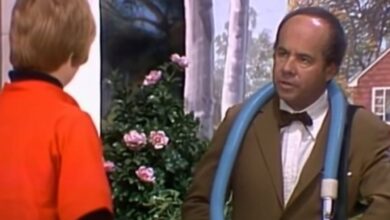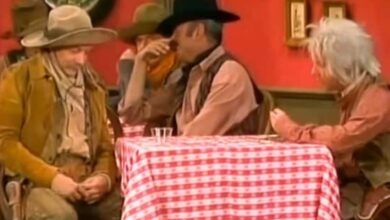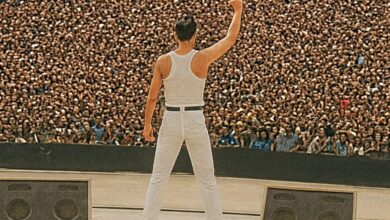Pantera’s “Cowboys from Hell” Ignites a Groove Metal Revolution in 1990
When Pantera released “Cowboys from Hell” in 1990, it wasn’t just a single—it was a declaration. This wasn’t the soft glam metal of the late ’80s, nor the technical precision of the burgeoning death metal scene. “Cowboys from Hell” struck with a raw, thunderous groove that carved out a new space in heavy metal. It announced Pantera’s rebirth and the arrival of groove metal, a subgenre that would define the 1990s. Though not a chart-topping hit in the traditional sense, its underground success and cultural impact far outweighed any Top 40 placement. The song became the rallying cry for a new generation of metalheads tired of overproduction and excess.
Pantera’s story up to that point was one of dramatic transformation. Formed in Arlington, Texas, in the early 1980s by brothers “Dimebag” Darrell Abbott on guitar and Vinnie Paul on drums, the band initially leaned toward glam metal, releasing four little-known albums. The addition of vocalist Philip Anselmo in 1987 marked a turning point. With Anselmo’s aggressive vocals and tougher aesthetic, the band began shedding its glittery skin. By the time “Cowboys from Hell” emerged, Pantera had fully reinvented itself—musically, visually, and philosophically. They became the face of a more grounded, streetwise metal scene rooted in authenticity and ferocity.
The inspiration behind “Cowboys from Hell” came from a mixture of confidence, ambition, and hometown pride. The band saw themselves as outlaws, heavy metal renegades coming from an unlikely place—Texas—ready to take on the world. The lyrics, brimming with swagger, paint Pantera as underdogs turned conquerors, a motif that resonated deeply with fans who felt alienated by the commercialized rock machine of the time. It wasn’t written by outside songwriters or designed for mass appeal—it came directly from the band’s core, making it feel all the more real.
The track was recorded at Pantego Sound Studio in Arlington, Texas, and produced by Terry Date, who would go on to become synonymous with Pantera’s signature sound. Date helped capture the sheer power of Dimebag’s guitar tone—sharp, sludgy, and surgical all at once. The song opens with one of the most recognizable riffs in metal history, a descending chug that instantly sets the tone. Anselmo’s vocals growl and snarl through the verses, while Vinnie Paul’s drums provide the perfect backbone—tight, thunderous, and groovy. The production was clear without being polished, a rawness that matched the band’s aesthetic.
“Cowboys from Hell” didn’t top any mainstream charts, but it stormed the metal underground like a wildfire. It became a staple on MTV’s Headbangers Ball and was a constant on college radio and metal club playlists. The album of the same name eventually went platinum, and the single helped propel Pantera from a regional act to an international powerhouse. More importantly, it helped push the entire metal scene into a new, heavier, more rhythmic direction.
Culturally, the song arrived at a crucial turning point. Metal fans in the early ’90s were growing disillusioned with glam’s theatrics and thrash’s rigidity. “Cowboys from Hell” offered a third path—groove-heavy, aggressive, and real. It didn’t rely on Satanic themes or over-the-top costumes. Pantera looked like their fans, and they played like they meant it. This authenticity created a new bond between artist and audience. Pantera shows became legendary for their intensity and the community they fostered.
The success of “Cowboys from Hell” was more than a career breakthrough; it was a new beginning. The band went on to release a string of genre-defining albums—Vulgar Display of Power, Far Beyond Driven, and The Great Southern Trendkill—but it was this song that opened the door. It led to bigger tours, larger audiences, and eventually, Pantera becoming the face of American metal in the ’90s. Their fanbase expanded exponentially, especially in Europe and South America, where “Cowboys from Hell” became an anthem for rebellion.
Its influence on the genre was immediate and profound. Bands like Machine Head, Lamb of God, and Slipknot would later cite Pantera as a foundational influence, and “Cowboys from Hell” as the spark. Groove metal, as a subgenre, was practically defined by this track. It demonstrated that heaviness didn’t have to come at the expense of rhythm and accessibility. For a generation of guitarists, Dimebag’s tone and style became a blueprint—pinch harmonics, whammy dives, and crushing riffs became must-have elements.
Not surprisingly, “Cowboys from Hell” has been covered and honored by countless artists. Trivium, Avenged Sevenfold, and Bullet for My Valentine have all cited it as a major inspiration, and live tributes are common at metal festivals worldwide. The song has appeared in video games like Guitar Hero and Rocksmith, helping it reach younger audiences long after its initial release. Each interpretation pays homage to the original’s sheer energy and unrelenting groove.
Around the time of the song’s release, Pantera was also undergoing a personal metamorphosis. Dimebag and Vinnie were solidifying their roles as one of the tightest rhythm sections in metal. Anselmo was evolving into a larger-than-life frontman, bringing theatricality and rawness without ever seeming artificial. There was no label meddling, no A&R strategy—just a band finally playing the music they were born to make.
Over three decades later, “Cowboys from Hell” remains a cornerstone of metal history. It still commands attention in live sets, still turns heads among new listeners. Its placement in “greatest metal songs of all time” lists is nearly guaranteed. More than just a hit, it’s a reference point—a song that signaled a tectonic shift in the landscape of heavy music.
It also helped establish new standards in production, guitar tone, and arrangement that would be emulated for years to come. Pantera’s use of space in the mix, their tight rhythmic interplay, and their focus on groove rather than speed all owe their breakthrough to this track. It changed how heavy music sounded, and how it felt.
While the tragic deaths of Dimebag Darrell in 2004 and Vinnie Paul in 2018 cast a shadow over Pantera’s legacy, “Cowboys from Hell” remains a vibrant reminder of their innovation and spirit. Posthumous tributes have only elevated the song’s importance, cementing it as a sacred artifact in the metal canon.
Ultimately, “Cowboys from Hell” endures because it captured a moment of pure reinvention—a band shedding its past and reshaping the future. It’s remembered not just for its crushing riff or growling vocal, but for its role in redefining what heavy metal could be. In one song, Pantera became outlaws, prophets, and legends. And the echoes of that Texas-sized riff are still shaking speakers to this day.





